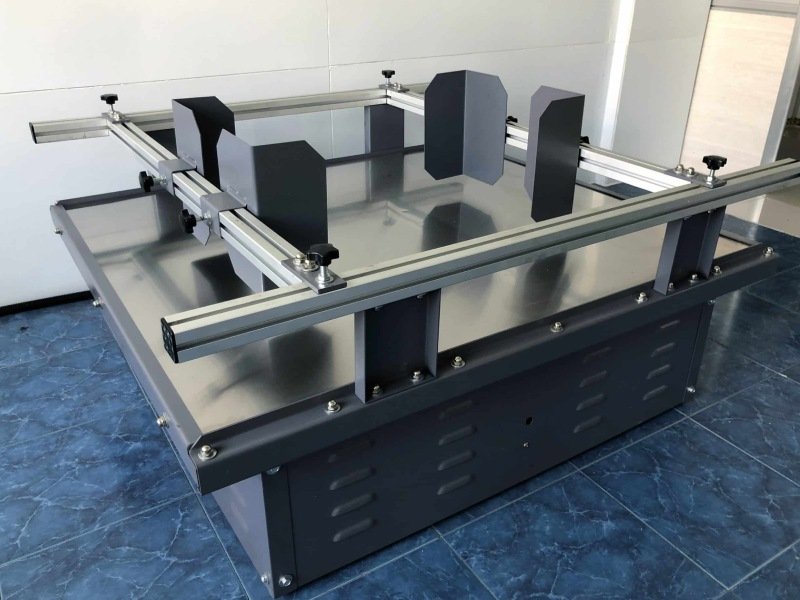Electrical cabinets are critical components in various industries, housing sensitive electrical and electronic equipment that requires protection from environmental factors, unauthorized access, and operational stresses. The reliability of these cabinets heavily depends on the performance of their latches, which secure doors and panels, ensuring proper sealing, structural integrity, and safety. For engineers tasked with designing, testing, or maintaining electrical cabinets, understanding how to evaluate latch performance is essential to ensure long-term reliability and compliance with industry standards. This article provides a comprehensive guide on testing latch performance for electrical cabinet reliability, covering methodologies, standards, tools, and best practices tailored for engineers.
Understanding Latch Functionality in Electrical Cabinets
Latches in electrical cabinets serve multiple purposes: they secure the cabinet door or panel, maintain environmental seals (e.g., IP or NEMA ratings), and withstand mechanical stresses such as vibration, impact, or pressure. A latch must perform reliably under various conditions, including temperature extremes, humidity, dust, and mechanical wear over time. Poor latch performance can lead to issues such as:
- Environmental ingress: Failure to maintain a proper seal can allow dust, water, or other contaminants to enter, damaging internal components.
- Security breaches: Weak latches may allow unauthorized access, compromising sensitive equipment.
- Operational failure: Latches that fail to hold under vibration or impact can cause cabinet doors to open unexpectedly, leading to safety hazards or equipment downtime.
To ensure reliability, engineers must test latches for mechanical strength, environmental resistance, and operational durability. The following sections outline a systematic approach to testing latch performance.
Key Performance Metrics for Latches
Before diving into testing methodologies, it’s critical to define the performance metrics that determine latch reliability. These metrics include:
- Mechanical Strength: The latch’s ability to withstand forces such as tension, compression, or shear without deforming or breaking.
- Cycle Durability: The number of open/close cycles the latch can endure before performance degradation.
- Sealing Effectiveness: The latch’s ability to maintain the cabinet’s environmental protection rating (e.g., IP66, NEMA 4X).
- Vibration Resistance: The latch’s performance under vibrational stress, common in industrial or transportation applications.
- Resistenza alla corrosione: The latch’s ability to resist degradation in harsh environments (e.g., saltwater exposure, chemical exposure).
- Ease of Operation: The force required to engage or disengage the latch, ensuring ergonomic use without compromising security.
- Locking Mechanism Security: For cabinets requiring secure access, the latch’s resistance to tampering or forced entry.
These metrics should align with the specific requirements of the cabinet’s application, such as outdoor telecommunications, industrial automation, or marine environments.
Industry Standards and Guidelines
Testing latch performance should comply with relevant industry standards to ensure consistency and reliability. Key standards include:
- IEC 60529 (IP Ratings): Defines the degree of protection against dust and water ingress. For example, an IP66-rated cabinet requires latches that maintain a dust-tight and water-resistant seal.
- NEMA 250: Specifies enclosure types for environmental protection in North America, such as NEMA 4 (watertight) or NEMA 12 (dust-tight).
- UL 50/50E: Governs enclosures for electrical equipment, including latch performance for environmental sealing and mechanical integrity.
- MIL-STD-810: Used for testing latch durability under environmental stresses like vibration, shock, and temperature extremes, particularly in military or aerospace applications.
- ISO 9227: Specifies corrosion testing methods, such as salt spray tests, to evaluate latch material durability.
Engineers should consult the relevant standard based on the cabinet’s intended use and ensure that testing protocols align with these requirements.
Testing Methodologies for Latch Performance
To evaluate latch performance comprehensively, engineers should employ a combination of mechanical, environmental, and operational tests. Below is a detailed breakdown of testing methodologies.
1. Mechanical Strength Testing
Mechanical strength tests assess the latch’s ability to withstand forces without failure. Common tests include:
-
Tensile and Compression Testing:
- Objective: Measure the force required to break or deform the latch.
- Method: Use a universal testing machine (UTM) to apply controlled tensile or compressive forces to the latch. Mount the latch on a test fixture mimicking the cabinet door and frame. Apply force until failure or a predefined limit (e.g., 500 N for industrial cabinets).
- Metrics: Maximum load, yield strength, and deformation characteristics.
- Tools: UTM (e.g., Instron or MTS systems), force gauges, and strain sensors.
-
Shear Testing:
- Objective: Evaluate the latch’s resistance to lateral forces, such as those caused by attempting to pry open the cabinet.
- Method: Apply shear forces perpendicular to the latch’s locking mechanism using a shear testing rig. Record the force at which the latch fails or deforms.
- Metrics: Shear strength and failure mode (e.g., latch breakage, mounting failure).
- Tools: Shear testing machine, torque sensors.
2. Cycle Durability Testing
Cycle durability tests simulate repeated opening and closing of the latch to assess long-term reliability.
- Objective: Determine the number of cycles the latch can endure before performance degradation (e.g., loosening, wear, or failure).
- Method: Use an automated cycling rig to repeatedly engage and disengage the latch. Set the rig to apply consistent force and speed, mimicking real-world usage. Test until failure or a predefined cycle count (e.g., 10,000 cycles for industrial cabinets).
- Metrics: Cycle count to failure, wear patterns, and changes in operational force.
- Tools: Automated cycling rigs, wear measurement tools (e.g., calipers, profilometers).
3. Sealing Effectiveness Testing
Sealing tests verify that the latch maintains the cabinet’s environmental protection rating.
- Objective: Ensure the latch provides a consistent seal against dust, water, or other contaminants.
- Method:
- Dust Testing: Place the cabinet in a dust chamber per IEC 60529 or NEMA 250 standards. Operate the latch and inspect for dust ingress after exposure.
- Water Ingress Testing: Subject the cabinet to water spray or immersion tests (e.g., IP66 requires high-pressure water jets). Check for leaks or seal degradation.
- Pressure Testing: Apply internal or external pressure to the cabinet to simulate wind loads or vacuum conditions. Measure seal integrity using pressure sensors.
- Metrics: Ingress protection compliance, seal deformation, and latch pressure retention.
- Tools: Dust chambers, water spray rigs, pressure testing equipment.
4. Vibration and Shock Testing
Vibration and shock tests evaluate latch performance under dynamic mechanical stresses.
- Objective: Ensure the latch remains secure under vibrational or impact loads.
- Method:
- Vibration Testing: Mount the cabinet on a vibration table and subject it to sinusoidal or random vibration profiles per MIL-STD-810 or IEC 60068-2-6. Monitor latch behavior (e.g., loosening, rattling).
- Shock Testing: Apply controlled impacts using a drop tester or shock table (per MIL-STD-810). Inspect for latch disengagement or damage.
- Metrics: Latch retention, structural integrity, and fastener loosening.
- Tools: Vibration tables, shock testers, accelerometers.
5. Corrosion Resistance Testing
Corrosion tests assess the latch’s durability in harsh environments.
- Objective: Verify that latch materials resist degradation from exposure to moisture, salt, or chemicals.
- Method: Conduct salt spray tests per ISO 9227 or ASTM B117. Expose the latch to a controlled saline environment for a specified duration (e.g., 96 hours). Inspect for corrosion, pitting, or material degradation.
- Metrics: Corrosion extent, material integrity, and coating performance.
- Tools: Salt spray chambers, visual inspection tools, microscopes.
6. Operational Force Testing
Operational force tests measure the ease of engaging and disengaging the latch.
- Objective: Ensure the latch is ergonomic while maintaining security.
- Method: Use a force gauge to measure the force required to open and close the latch. Test across multiple cycles to detect changes in force due to wear.
- Metrics: Opening/closing force (in Newtons), consistency over cycles.
- Tools: Force gauges, torque wrenches.
7. Security Testing
Security tests evaluate the latch’s resistance to tampering or forced entry.
- Objective: Ensure the latch prevents unauthorized access.
- Method: Attempt to bypass the latch using common tools (e.g., screwdrivers, crowbars) or apply excessive force to simulate break-in attempts. Measure the force or time required to compromise the latch.
- Metrics: Tamper resistance, failure mode, and time to breach.
- Tools: Pry tools, impact testers, timers.
Best Practices for Latch Testing
To ensure accurate and repeatable results, engineers should follow these best practices:
- Define Test Requirements Early: Align test protocols with the cabinet’s intended application and relevant standards (e.g., IP66, NEMA 4X). Specify pass/fail criteria for each test.
- Use Representative Test Fixtures: Design test fixtures that replicate the cabinet’s door, frame, and mounting conditions to ensure realistic results.
- Calibrate Equipment Regularly: Ensure all testing equipment (e.g., UTMs, vibration tables) is calibrated to maintain accuracy.
- Document Test Conditions: Record environmental conditions (e.g., temperature, humidity) and test parameters to ensure reproducibility.
- Perform Accelerated Life Testing: Use accelerated testing to simulate long-term use in a shorter timeframe, especially for cycle durability and corrosion tests.
- Combine Tests When Appropriate: Simulate real-world conditions by combining tests (e.g., vibration and temperature exposure) to assess latch performance under complex stresses.
- Analyze Failure Modes: After each test, analyze failure modes (e.g., material fatigue, seal breach) to identify design improvements.
- Involve Cross-Functional Teams: Collaborate with design, manufacturing, and quality teams to ensure test results inform latch and cabinet design.
Tools and Equipment for Latch Testing
The following tools are commonly used for latch performance testing:
- Universal Testing Machine (UTM): For tensile, compression, and shear testing.
- Automated Cycling Rig: For cycle durability testing.
- Environmental Chambers: For dust, water, and corrosion testing.
- Vibration and Shock Tables: For dynamic stress testing.
- Force Gauges and Torque Wrenches: For operational force measurement.
- Profilometers and Microscopes: For wear and corrosion analysis.
- Data Acquisition Systems: For real-time monitoring of test parameters.
Investing in high-quality, calibrated equipment is critical for reliable results.
Interpreting Test Results
After conducting tests, engineers must analyze the data to determine whether the latch meets performance requirements. Key steps include:
- Compare Against Standards: Verify that test results meet or exceed the requirements of relevant standards (e.g., IP66, NEMA 4X).
- Identify Weak Points: Analyze failure modes to pinpoint design or material weaknesses.
- Quantify Performance Margins: Determine how far the latch exceeds minimum requirements to assess safety margins.
- Document Findings: Create detailed test reports with quantitative data, failure analyses, and recommendations for improvements.
- Iterate Design: Use test results to refine latch design, materials, or manufacturing processes.
Case Study: Testing Latches for Outdoor Telecommunications Cabinets
Consider an outdoor telecommunications cabinet requiring an IP66 rating and resistance to vandalism. The testing process might include:
- Mechanical Strength: Tensile testing to ensure the latch withstands 1000 N of force.
- Cycle Durability: 20,000 open/close cycles to simulate 10 years of use.
- Sealing Effectiveness: Water jet testing per IEC 60529 to confirm IP66 compliance.
- Vibration Resistance: Random vibration testing per MIL-STD-810 to mimic transportation stresses.
- Resistenza alla corrosione: 240-hour salt spray test per ISO 9227 for coastal environments.
- Security Testing: Attempted forced entry with pry tools to verify tamper resistance.
Test results showed that a stainless steel compression latch exceeded IP66 requirements, withstood 1500 N of force, and endured 25,000 cycles without failure. However, minor corrosion was observed, leading to a recommendation for an enhanced coating.
Challenges and Solutions in Latch Testing
Engineers may encounter challenges during latch testing, such as:
- Challenge: Inconsistent test results due to fixture misalignment.
- Solution: Use precision fixtures and verify alignment before testing.
- Challenge: Difficulty simulating real-world conditions.
- Solution: Combine multiple test types (e.g., vibration and temperature) to approximate field conditions.
- Challenge: High testing costs for small batches.
- Solution: Prioritize critical tests based on application requirements and use accelerated testing to reduce time and cost.
Future Trends in Latch Performance Testing
Advancements in testing technology are shaping the future of latch performance evaluation:
- Digital Twins: Virtual simulations of latch performance using finite element analysis (FEA) to predict failure modes before physical testing.
- Automated Testing Systems: AI-driven test rigs that adapt test parameters based on real-time data.
- Chiusure intelligenti: Integration of sensors in latches to monitor performance (e.g., seal integrity, cycle count) in real-world applications.
- Materiali sostenibili: Testing new, eco-friendly latch materials for corrosion resistance and durability.
Conclusione
Testing latch performance is a critical step in ensuring the reliability of electrical cabinets. By systematically evaluating mechanical strength, cycle durability, sealing effectiveness, vibration resistance, corrosion resistance, operational force, and security, engineers can ensure that latches meet the demands of their intended applications. Adhering to industry standards, using precise testing methodologies, and following best practices will lead to robust latch designs that enhance cabinet reliability. As technology evolves, incorporating advanced tools like digital twins and automated testing systems will further improve the accuracy and efficiency of latch performance testing. For engineers, mastering these techniques is essential to delivering safe, durable, and compliant electrical cabinets.







